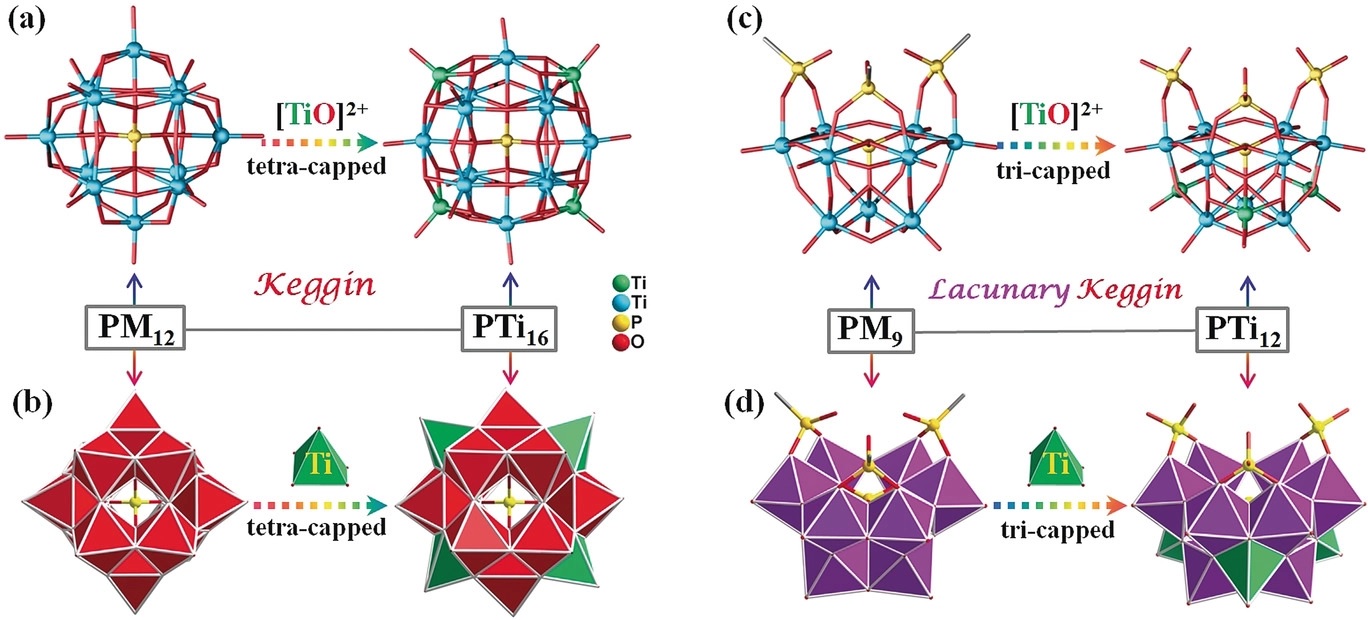兰亚乾教授课题组在ANGEWANDTE CHEMIE-INTERNATIONAL EDITION 发表研究论文
Self-Assembly of a Phosphate-Centered Polyoxo-Titanium Cluster: Discovery of the Heteroatom Keggin Family
Li, N (Li, Ning)[ 1,2 ] ; Liu, J (Liu, Jiang)[ 1 ] ; Liu, JJ (Liu, Jing-Jing)[ 1 ] ; Dong, LZ (Dong, Long-Zhang)[ 1 ] ; Li, SL (Li, Shun-Li)[ 1 ] ; Dong, BX (Dong, Bao-Xia)[ 2 ] ; Kan, YH (Kan, Yu-He)[ 3 ] ; Lan, YQ (Lan, Ya-Qian)[ 1 ]*(兰亚乾)
[ 1 ] Nanjing Normal Univ, Jiangsu Collaborat Innovat Ctr Biomed Funct Mat, Sch Chem & Mat Sci, 1 Wenyuan Rd, Nanjing 210023, Jiangsu, Peoples R China
[ 2 ] Yangzhou Univ, Sch Chem & Chem Engn, Yangzhou 225002, Jiangsu, Peoples R China
[ 3 ] Normal Univ, Sch Chem & Chem Engn, Huaian 223300, Peoples R China
ANGEWANDTE CHEMIE-INTERNATIONAL EDITION,201910, DOI: 10.1002/anie.201910491
Over the past 200 years, the most famous and important heteroatom Keggin architecture in polyoxometalates has only been synthesized with Mo, W, V, or Nb. Now, the self-assembly of two phosphate (PO43-)-centered polyoxo-titanium clusters (PTCs) is presented, PTi16 and PTi12, which display classic heteroatom Keggin and its trivacant structures, respectively. Because Ti-IV has lower oxidate state and larger ionic radius than Mo-VI, W-VI, V-V, and Nb-V, additional Ti-IV centres in these PTCs are used to stabilize the resultant heteroatom Keggin structures, as demonstrated by the cooresponding theoretical calculation results. These photoactive PTCs can be utilized as efficient photocatalysts for highly selective CO2-to-HCOOH conversion. This new discovery indicates that the classic heteroatom Keggin family can be assembled with Ti, thus opening a research avenue for the development of PTC chemistry.

文章链接:
https://onlinelibrary.wiley.com/doi/full/10.1002/anie.201910491
版权与免责声明:本网页的内容由收集互联网上公开发布的信息整理获得。目的在于传递信息及分享,并不意味着赞同其观点或证实其真实性,也不构成其他建议。仅提供交流平台,不为其版权负责。如涉及侵权,请联系我们及时修改或删除。邮箱:sales@allpeptide.com